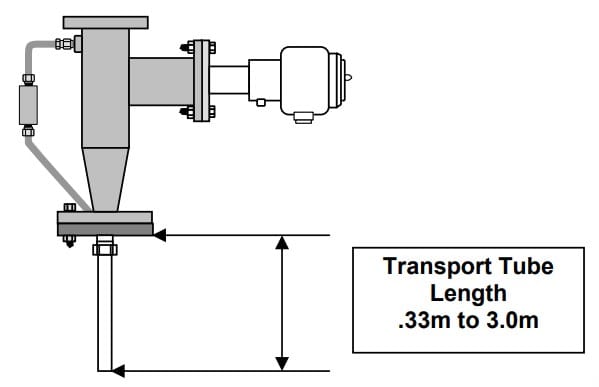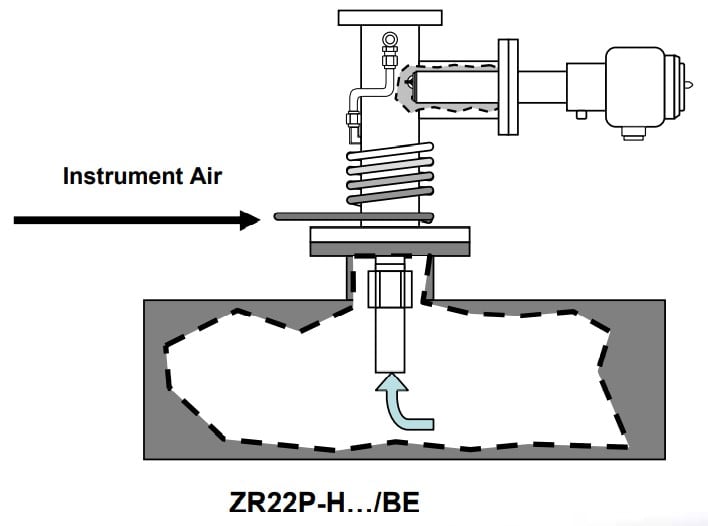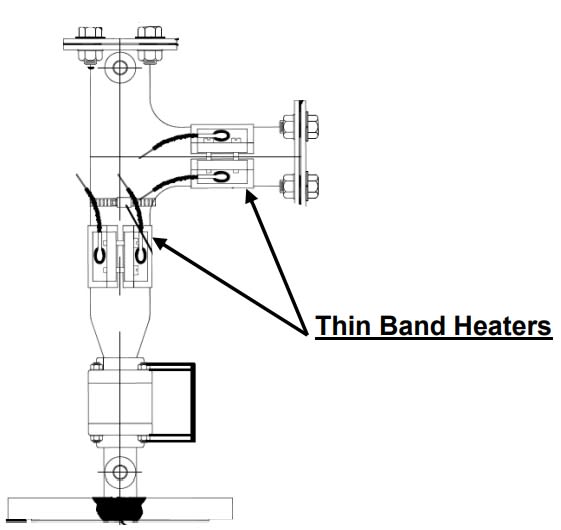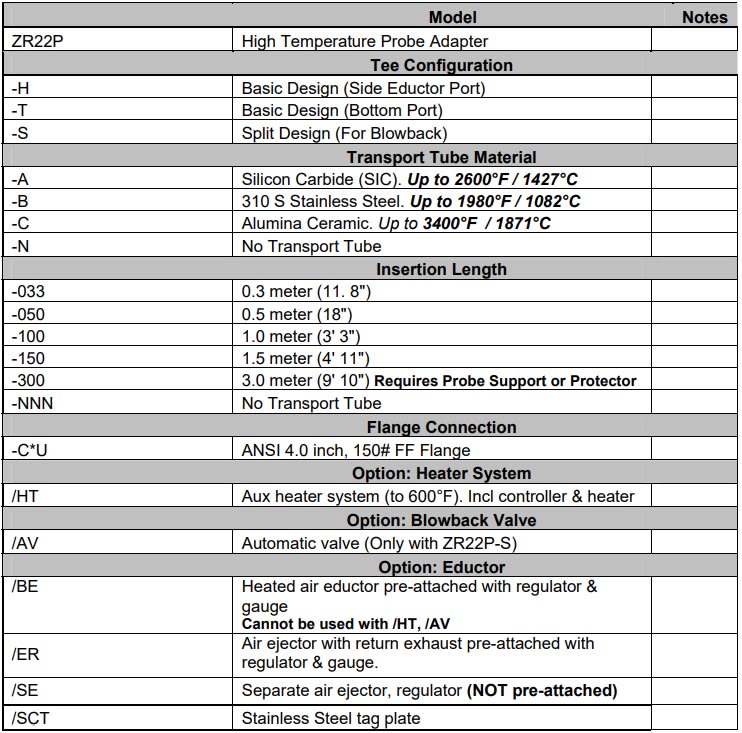High-Temperature Probe Adapters
When do I need to use a High-Temperature Probe Adapter?
The purpose of the High-Temperature Adapter (ZR22P) is to accommodate the ZR22 series of Zirconia Oxygen Detectors for use in process gas temperatures that exceed 700ºC (1292 ºF).
The High-Temperature Probe Adapter (ZR22P) can use either existing process pressure, or vacuum pressure to draw a sample away from the process, and cool the process sample to a temperature below 700˚C. This allows the Zirconia oxygen detector to operate away from the high temperatures that would otherwise prevent cell temperature control.
Several models of the High-Temperature Probe Adapter are available for different applications and environments and can be designed to accommodate the varying needs of these process samples.
A few questions we need to ask:
- What is the temperature of the process?
- What is the process pressure?
- Is there a high amount of particulate?
- Where does the sample gas go?
- What is my process flange connection?
What is the process temperature?
The High-Temperature Probe Adapter (ZR22P) can be used with varying process temperatures, and different materials are used for the varying temperatures. The High-Temperature Probe Adapter can accommodate process temperatures of 700˚C (1292˚F) to 1871˚C (3400˚F). The adapter itself is made of 316 Stainless Steel. The transport tube (in-situ portion) utilizes different materials based on the temperature ranges of the process gases.
For temperatures up to: 
- 1082˚C (1980˚F) – 310 Stainless Steel
- 1427˚C (2600˚F) – Silicon Carbide (SiC)
- 1871˚C (3400˚F) – Alumina Ceramic
What is the Process Pressure?
 When the process gases are under positive pressure the sample gas will naturally be forced up to the oxygen probe. In instances when there is a negative process pressure, the sample will need to be drawn to the oxygen probe. The High-Temperature Probe Adapter can be fitted with an air eductor, which creates a vacuum to draw the sample to the probe. Depending upon environmental regulations, the customer may wish to vent the sample gases to the atmosphere or return the sample back into the process. The Eductor Return option pipes the sample gases back through the adapter flange.
When the process gases are under positive pressure the sample gas will naturally be forced up to the oxygen probe. In instances when there is a negative process pressure, the sample will need to be drawn to the oxygen probe. The High-Temperature Probe Adapter can be fitted with an air eductor, which creates a vacuum to draw the sample to the probe. Depending upon environmental regulations, the customer may wish to vent the sample gases to the atmosphere or return the sample back into the process. The Eductor Return option pipes the sample gases back through the adapter flange.
Particulate and Dust Loading?
 Many processes contain large amounts of dust and particulates (i.e. lime kilns), and these particulates can cause clogging of the oxygen sampling system. The ZR22P can be provided with an Automatic Blowback system (/AV option) that can be controlled via the ZR802 Oxygen Converter or the AV550G Oxygen Averaging system. The actuator uses a 4-way, 2 positions single solenoid valve with a double system. The actuator uses a 4-way, 2 positions single solenoid valve with a double-acting air actuator. The automated valve closes when blowback is initiated, thereby isolating the detector during blowback operations. The actuator is electrically controlled by a solenoid, which is pre-wired from the factory.
Many processes contain large amounts of dust and particulates (i.e. lime kilns), and these particulates can cause clogging of the oxygen sampling system. The ZR22P can be provided with an Automatic Blowback system (/AV option) that can be controlled via the ZR802 Oxygen Converter or the AV550G Oxygen Averaging system. The actuator uses a 4-way, 2 positions single solenoid valve with a double system. The actuator uses a 4-way, 2 positions single solenoid valve with a double-acting air actuator. The automated valve closes when blowback is initiated, thereby isolating the detector during blowback operations. The actuator is electrically controlled by a solenoid, which is pre-wired from the factory.
 Heated and Insulated Options
Heated and Insulated Options
Occasionally, the ambient conditions outside of the process may lead to a condensation build-up within the eductor. The /BE option uses conductive and convective heat from the process gasses to heat the instrument air prior to the eductor. As contact heat from the process gasses heat the adapter tee, the convective heat raises the temperature of the instrument air. The process gasses are then vented to the atmosphere, instead of being piped back into the process.
T his option utilizes a small thin band, electrical heaters, and insulation to warm the adaptor and eductor.
his option utilizes a small thin band, electrical heaters, and insulation to warm the adaptor and eductor.
Selection Options
Summary
- To enable process optimization, asset protection, and compliance with environmental regulations.
- To accommodate the varying needs of these process samples and operate away from high temperatures that would otherwise prevent cell temperature control.
- To ensure accurate, repeatable measurement, the key to obtaining optimal results in your process.
Yokogawa’s Solutions
- Measurement of O2 Concentration in Hot Blast Stoves | Yokogawa America
- Paper Dryer Control | Yokogawa America
- Importance of Humidity Control During Drying | Yokogawa America
- Air Leak Detection in Sintering Furnaces to Enhance Efficiency and Product Quality | Yokogawa America
Oxygen Analyzer Products
Process Analyzers | Yokogawa America
Instruction Manual:
ZR22P High-Temperature Probe Adapter
Related Products & Solutions
-
Multi Channel Oxygen Analyzer System ZR22/AV550G
The AV550G Multi Channel Oxygen Analyzer System allows for measurements on up to eight ZR22 probes simultaneously. The ZR probe's in-situ measurement method does not require any process conditioning or extractive sampling, reducing maintenance costs and resulting in faster measurement response to changes in the process.
-
Single Channel Oxygen Analyzer System ZR22/ZR402
- Single Channel Oxygen Analyzer System ZR22/ZR402
- ZR probe in-situ measurement method- no process conditioning, extractive sampling
- Lower maintenance costs, faster measurement response
-
Zirconia Oxygen/Humidity Analyzer ZR22G, ZR802G
This Oxygen concentration and humidity at high temperatures consists of a ZR22G detector equipped with a long-life and highly reliable zirconia sensor, and a converter ZR802G equipped with digital communication and data log functions.
ZR22G and ZR802G can be measured directly and continuously without a sampling device. It is easy to maintain and reduce operating costs by self-diagnosis of sensor deterioration (without using calibration gas )and replacing the heater assembly on site.
